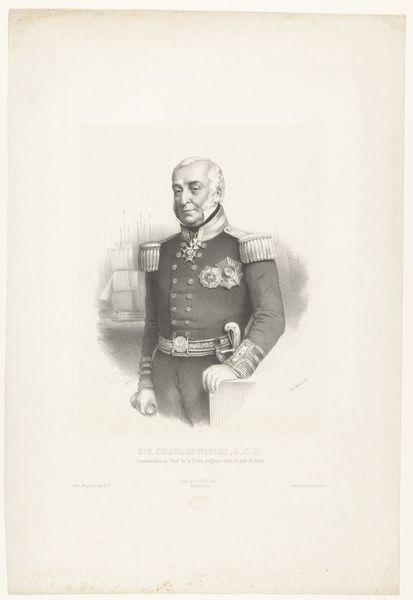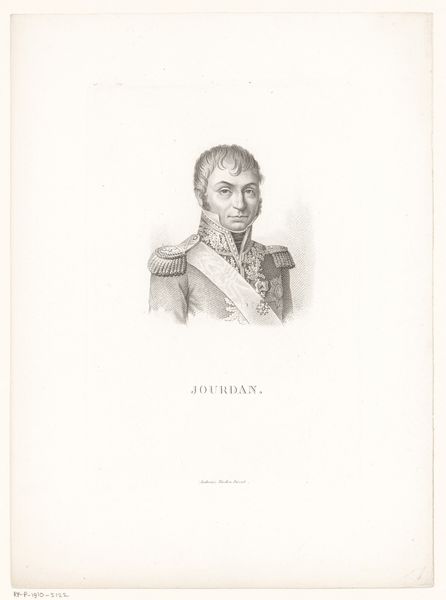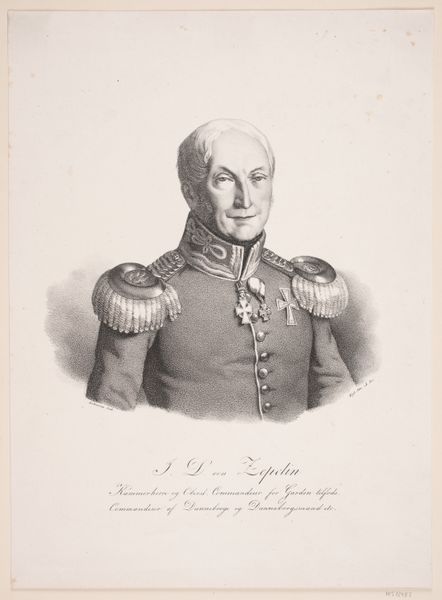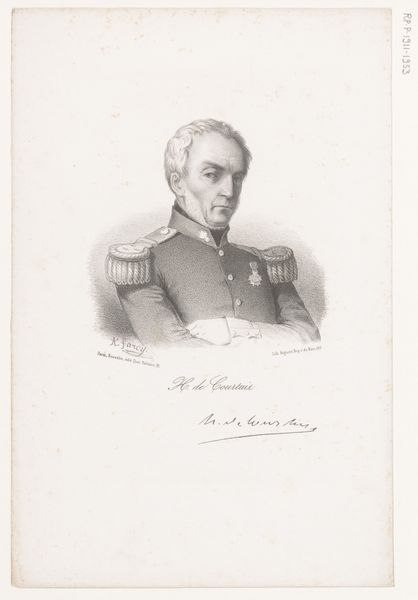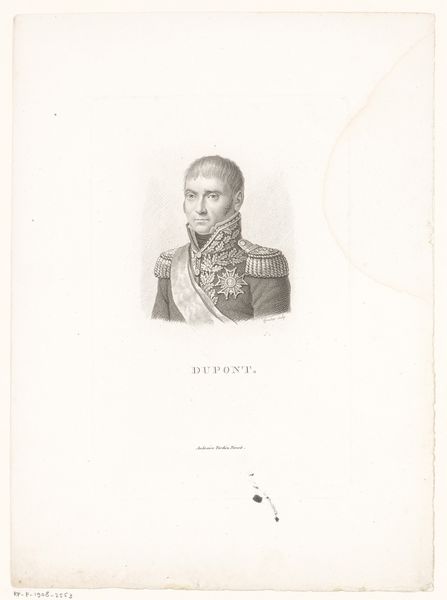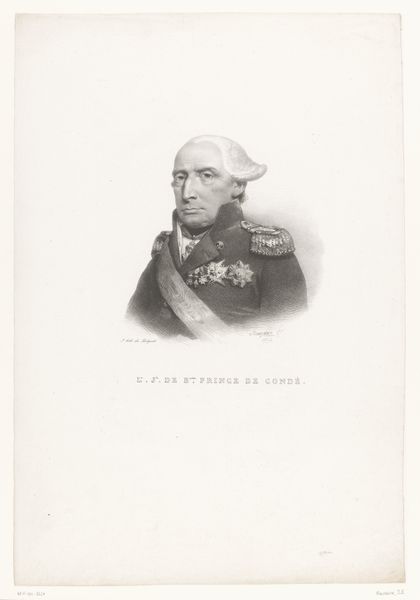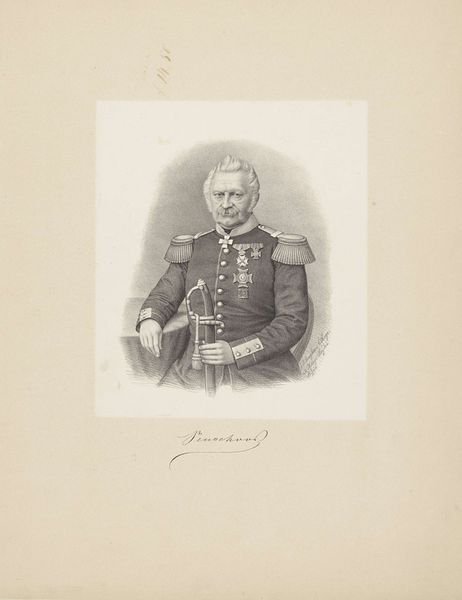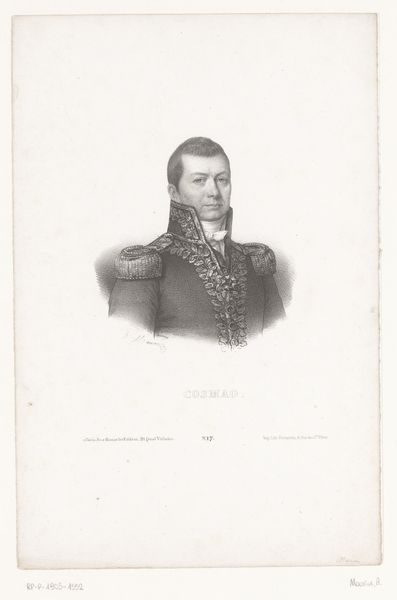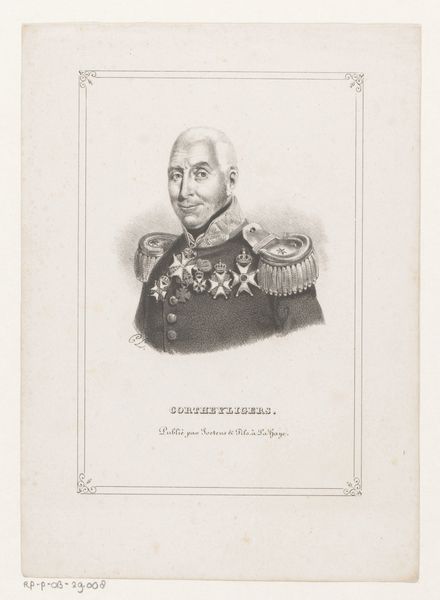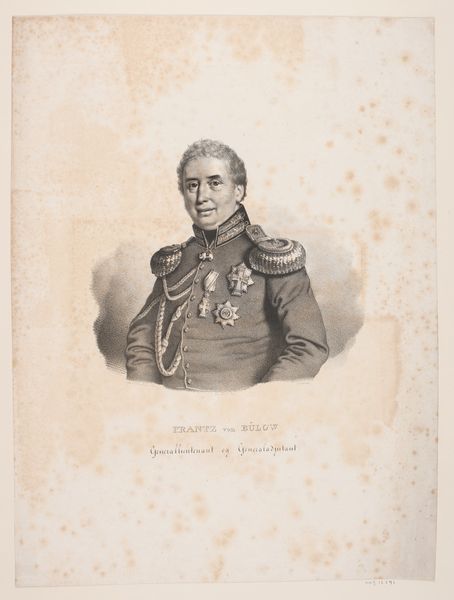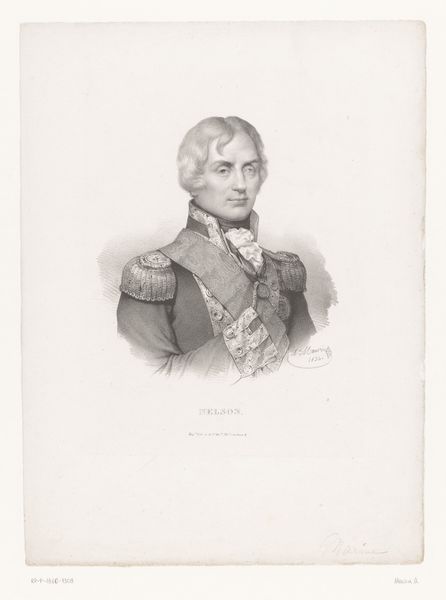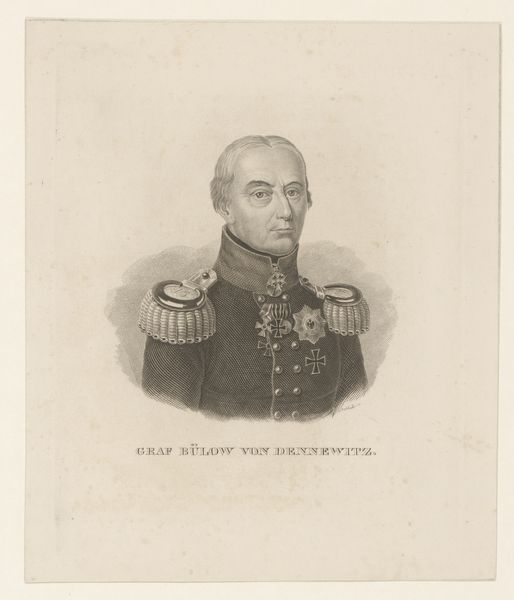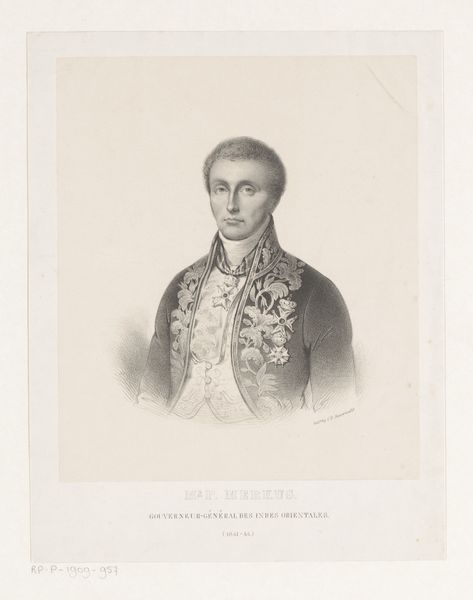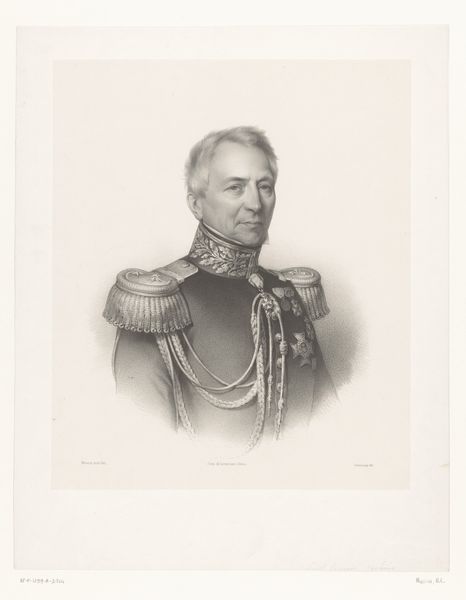
print, engraving
#
portrait
#
neoclacissism
# print
#
engraving
#
realism
Dimensions: height 207 mm, width 136 mm
Copyright: Rijks Museum: Open Domain
Curator: Good morning. Today we're observing a fascinating print of Nicolas-Charles-Marie Oudinot, Duke of Reggio, dating back to around 1818, created by Charles Aimé Forestier. It exemplifies a strong adherence to the Neoclassical style and displays a clear realism, capturing Oudinot with remarkable detail. It's an engraving, offering crisp lines. Editor: There’s an undeniable austerity to the portrayal, a certain detachment. Even in print, there's a formidable presence. Do you agree? Curator: Indeed. Forestier presents Oudinot as an important and respected military figure, no doubt capitalizing on his position in the post-Napoleonic French sociopolitical sphere. Notice the meticulously engraved details on his uniform and decorations – symbols of status and power during that era. Editor: The uniform speaks volumes, doesn't it? Military regalia has historically been a tool, constructing, negotiating, or cementing identity and social position. Think of its intersection with ideas around gender and nationhood in that period. Curator: Absolutely. This ties into the politics of image-making, especially concerning military figures after the French Revolution and the Napoleonic Wars. It served a function. Art had a very clear role to play in reconstructing legitimacy. This work also helps us understand shifting visual expectations within art and political structures during that period. Editor: Looking at him, I see a society deeply concerned with establishing order, creating narratives of heroism to bolster its identity. What about Oudinot's gaze—he seems unwilling to really meet ours. Is it deliberate, a display of untouchable status? Curator: His posture does strike that tone. There’s a power dynamic embedded in the act of viewing portraits like this in its time and today. Art shapes not just individual perceptions, but also broader societal beliefs and expectations of people. This can influence who gets to occupy positions of visibility and power. Editor: The image is simple but it invites us to consider issues like visual agency and its function within society, specifically how leaders present themselves. Thank you for walking us through these reflections on the duke and how context matters in portraiture. Curator: It's through interrogations such as these that art becomes relevant to larger issues outside museums.
Comments
No comments
Be the first to comment and join the conversation on the ultimate creative platform.
